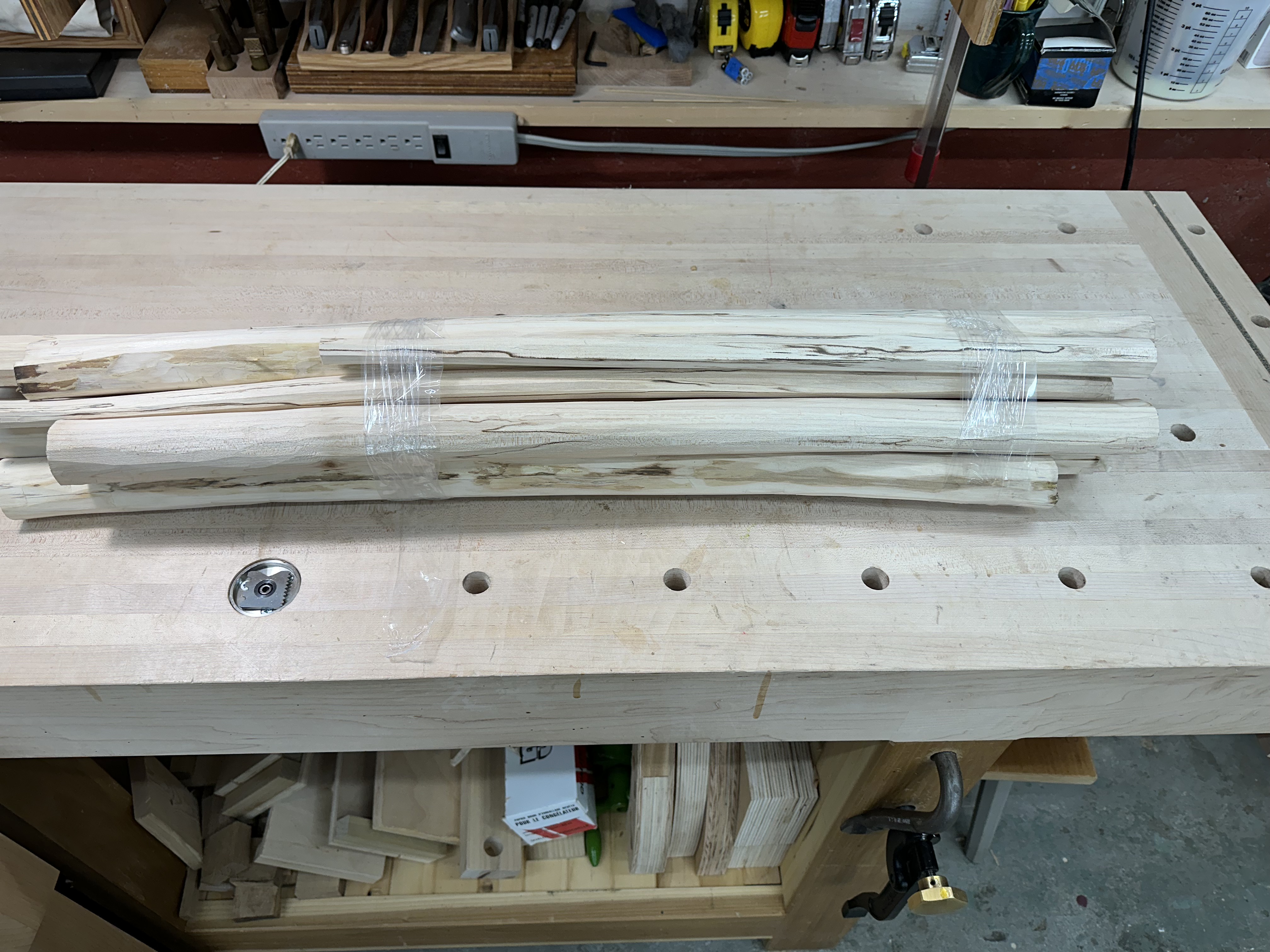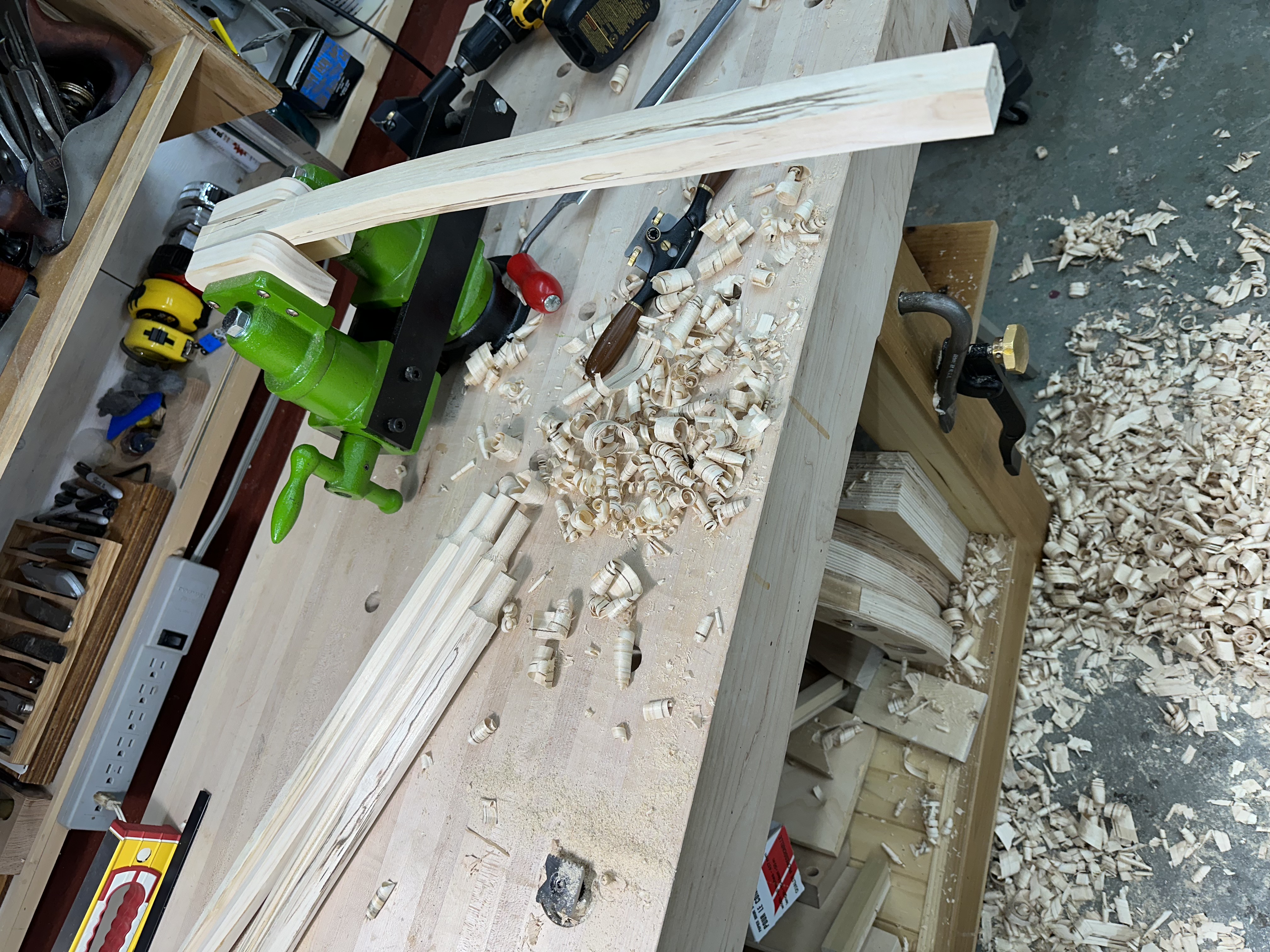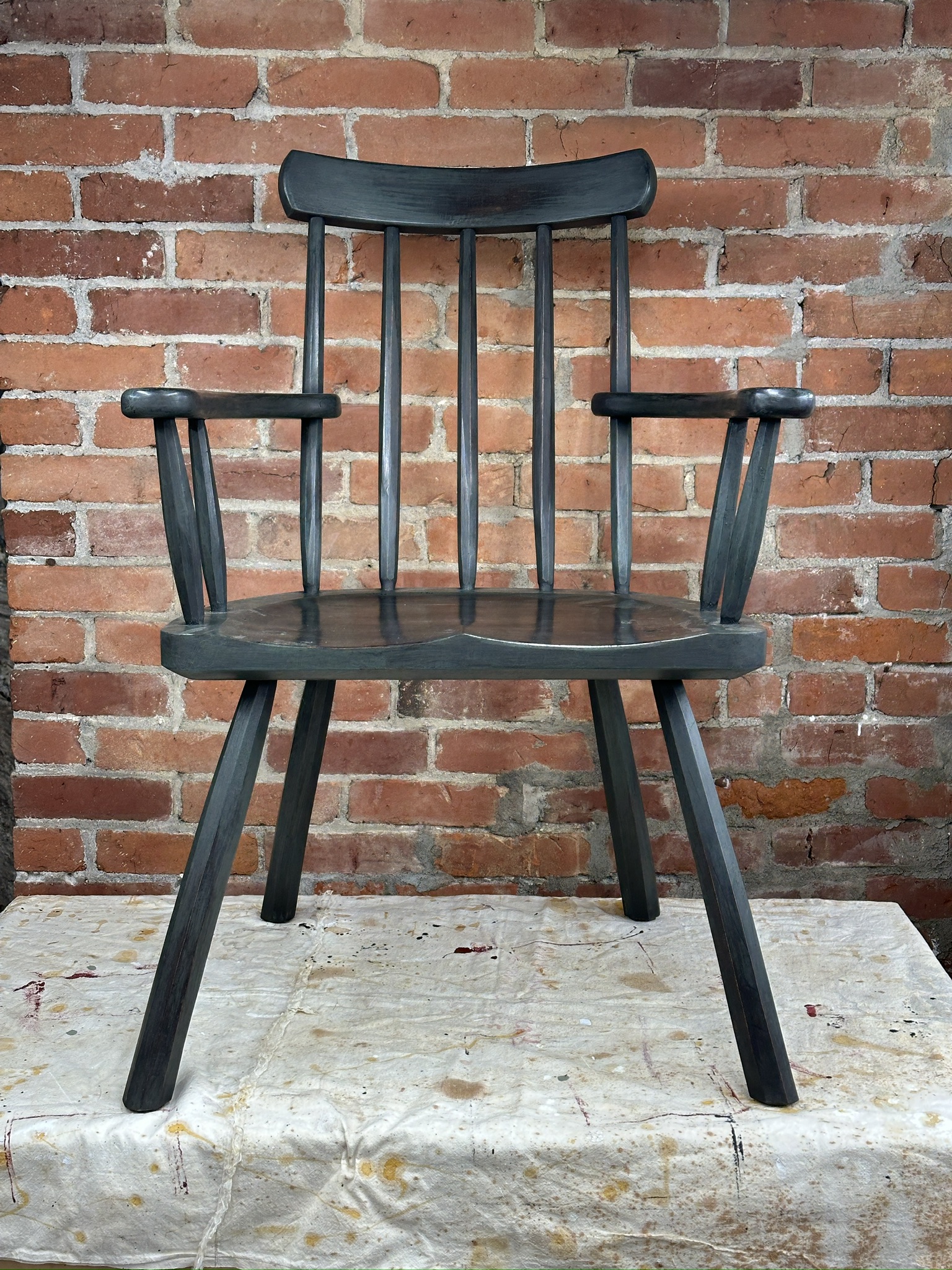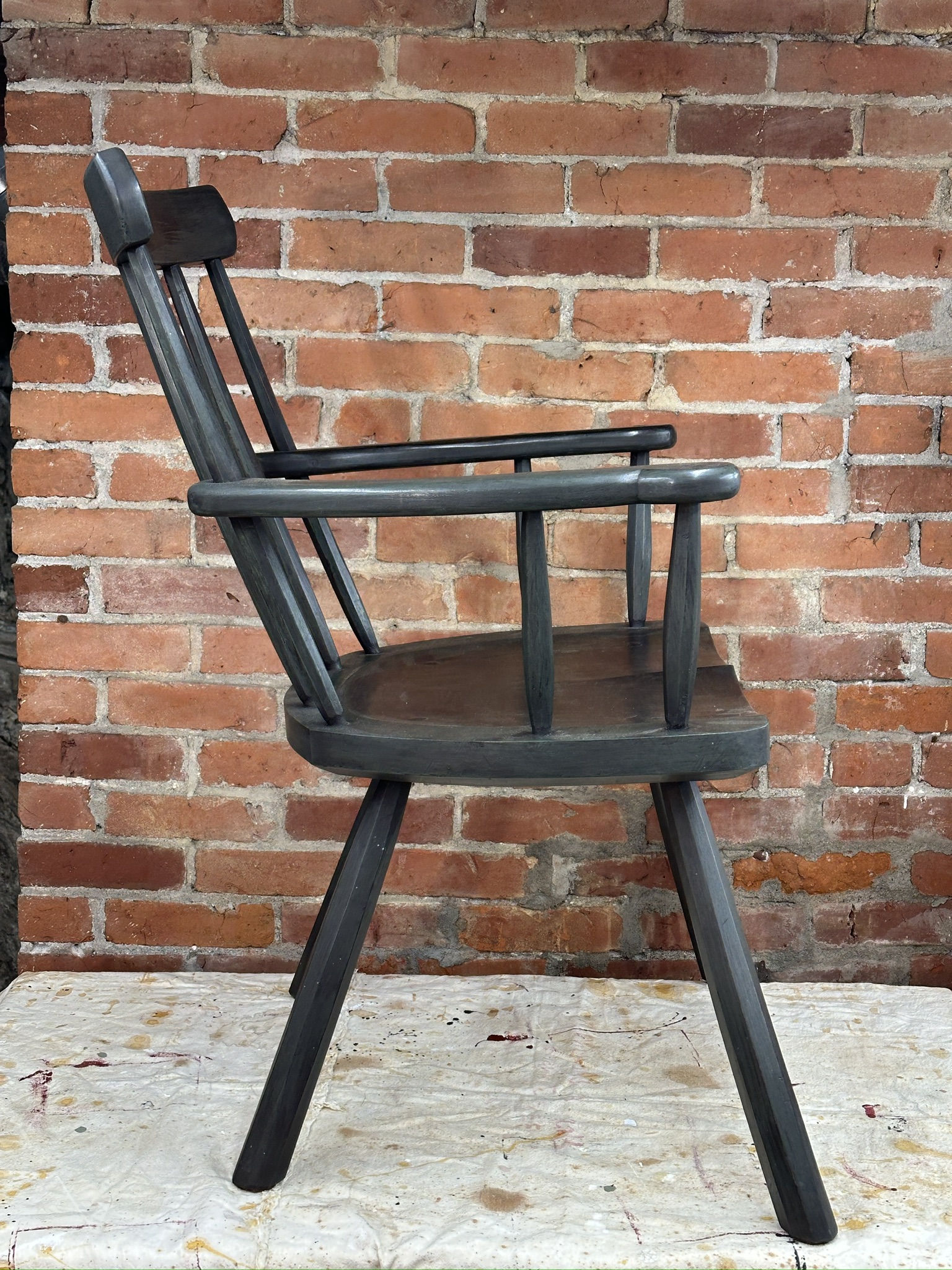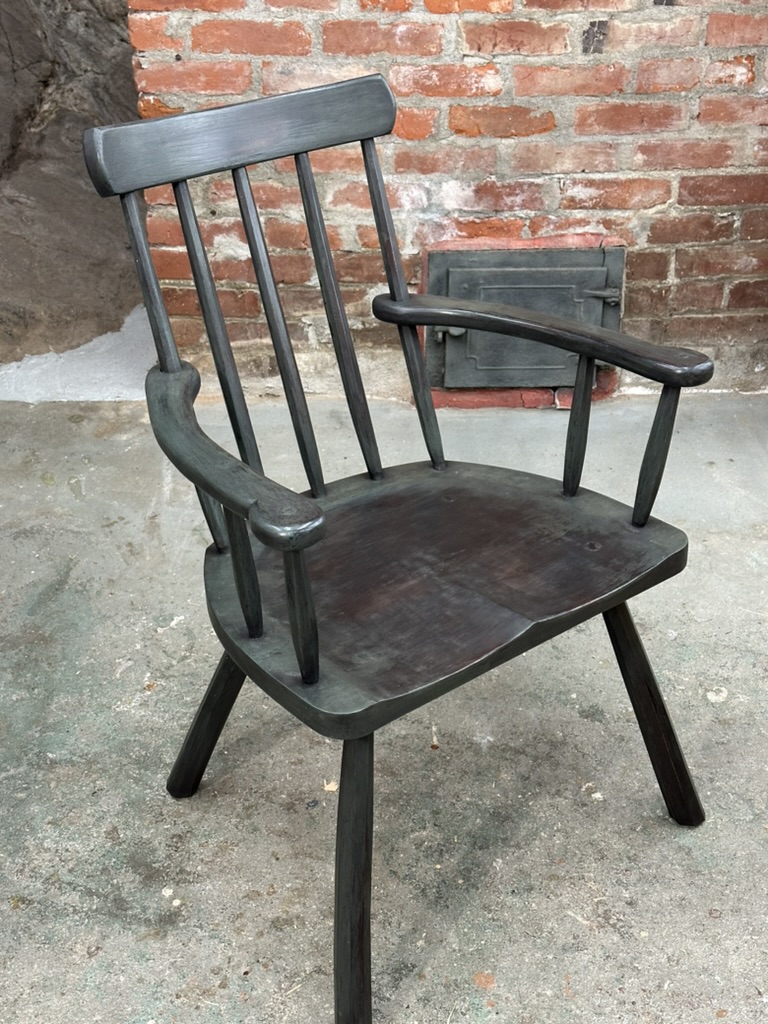The chairs that inspire me these days tell a story about the place they come from and the people who live there. Chris Williams writes about sourcing and riving ash for his chairs in his home village of Llanybri in Wales, and of letting curved sticks, found in local hedgerows, dictate the shape of an arm bow.
The stick chair is a robust and adaptable design which dictates that chairs should be made from whatever is at hand. I know from experience that kiln-dried poplar and red oak are fine for chair making. So it would be a mistake to get all precious and fussy about local woods. I’m also lucky that the Vancouver Island Woodworkers Guild is a reliable source of locally harvested wood including Garry Oak which is the native species in my neighbourhood . Garry Oak is great for chair making.
There’s probably no such thing as a vernacular Vancouver Island stick chair. But if there was, it would be made of bigleaf maple. It’s everywhere in these parts, it’s pretty, and it’s relatively easy to work with. I’ve used it a lot over the years, but I’ve never made a chair from it. Until now. The downsides of bigleaf maple at least from a chair-making perspective are that it’s not great for steam bending, and it’s often really light coloured, which can create some challenges for finishing.
Last year, our friend Tommy B gave me a couple of small logs from bigleaf maple that had fallen on his land on Saltspring Island. I thought I might try my hand at riving. I had no particular idea how things would turn out, or what I would do with the results. Eventually I wound up with a bundle of hexagonal sticks. Bonus, the wood was spalted (as bigleaf maple often is) but it was not dead straight, the grain had some gentle curves to it.
This fall I found a piece of bigleaf maple that would work as a seat. It was in the wood bunk, leftover from an much earlier project and there was barely enough to make a seat blank and a couple of arms. So I could make this chair completely from bigleaf maple that I had on hand.
I’m not sure what drew me to the idea of making another Irish chair. My one earlier venture into this form had worked out pretty well. Kim even seemed to miss that one when we sent it to a new home. But as always I had some refinements in mind and new ideas to try. The previous chair was only vaguely Irish and reflected other other design influences. I hoped that this one would have a more conventional form, in line with the Gibson chairs, and the fool’s chairs. Cousin-in-law Gerry advises that they call it a fool’s chair because any fool can make one . No pressure. The resulting chair is a hybrid, part Gibson and part fool’s chair. Definitely Irish, but perhaps a bit confused. The gentle curves in the legs and sticks seem to work just fine.
As for finishing, I was hoping to keep the spalting visible, but in a way that did not distract from the shape of the chair. I experimented with Quebracho and fuming with ammonia, but that all went astray and I ultimately wound up painting the chair. So the beautiful spalting is now just a memory. I think I may have to have another run at making a proper west-coast Irish chair.
Bigleaf maple, milk paint, linseed oil wax.
